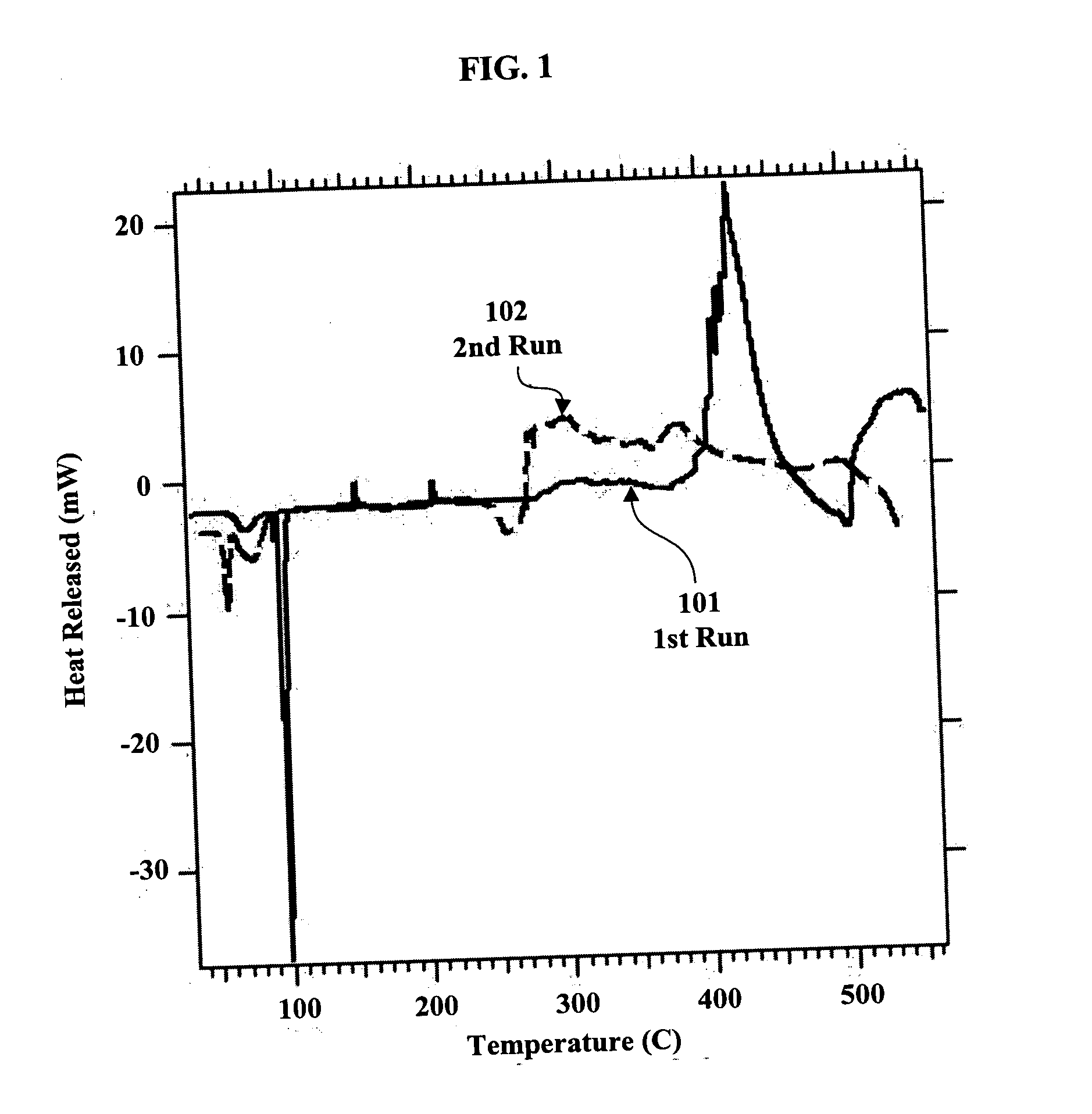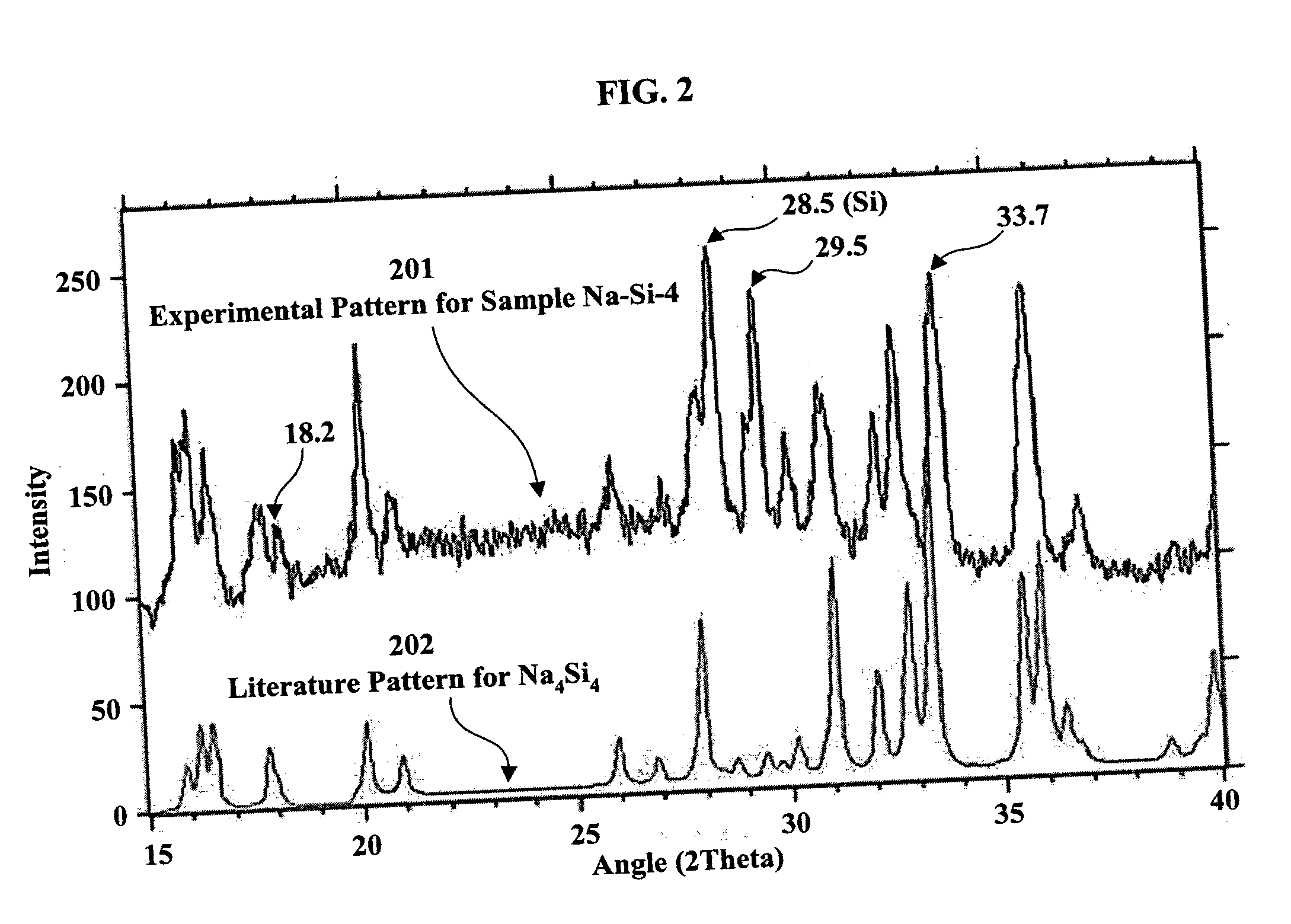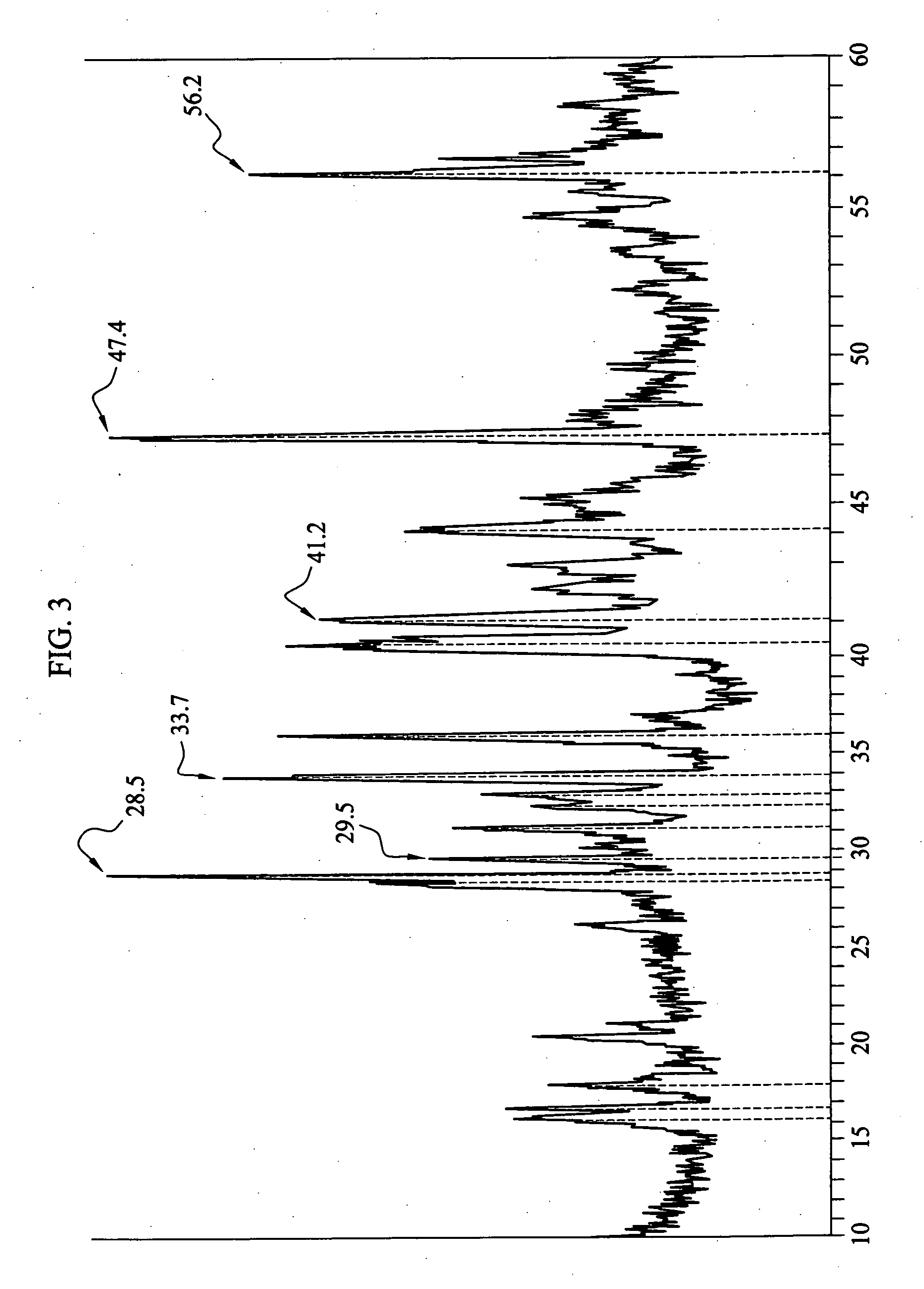Silicide compositions containing alkali metals and methods of making the same
a technology of silicide composition and alkali metal, which is applied in the direction of inorganic non-surface active detergent composition, physical/chemical process catalyst, lighting and heating apparatus, etc., can solve the problems of high cost, high labor intensity, and high labor intensity of labor
- Summary
- Abstract
- Description
- Claims
- Application Information
AI Technical Summary
Problems solved by technology
Method used
Image
Examples
example 1
Initial Experimentation
[0038] Although Na is known to react with borosilicate glass at temperatures above 300° C., thereby causing darkening, powdered or solid products were prepared by heating equimolar mixtures of Na and crystalline powdered Si in evacuated 50 and 125 mL Erlenmeyer flasks. Overnight heating at 500° C. yielded gray-black powders with some crushable lumps. Three separate preparations made at this temperature yielded products that were found to release H2 in amounts equivalent to 0.042, 0.054, and 0.058 kg H2 per kg of sample. Accordingly, it was determined that the conditions of temperature and composition may not be optimal. The literature and the DSC results in FIGS. 1 and 6 suggest that 500° C. might be too high a temperature. Accordingly, a sample was prepared by heating the mixture of sodium and silicon up to about 400° C. The resulting product gave a hydrogen yield equivalent to 0.072 kg H2 per kg of sample. This yield exceeds the target yields of hydrogen pr...
example 2
Stability in Air
[0042] The Na—Si material of the invention reacts immediately with water to produce hydrogen and release heat in the process. However, the material is completely unreactive toward dry oxygen over a period of at least one day. Unless the relative humidity is high, the powder can be weighed in air or transferred from one container to another. A sample was exposed to laboratory air in an aluminum weighing dish and only slowly reacted with moisture. After two hours, a small amount of liquid water was added, and the black pieces immediately evolved hydrogen. It is likely that the methods described herein for preparation of the composition of the invention result in an alkali metal silicide that is protected by a surface layer of silicon dioxide or some other composition. In any event, the resulting material is easy to handle in air, which results in the ability to produce hydrogen on demand.
[0043] These results demonstrate that it is straightforward to produce a stable ...
example 3
Reaction Between Sodium and Silicon Powder at 500° C.
[0044] Sample Na—Si-1 was prepared by introduction of 0.56 g of powdered crystalline silicon (Alfa Aesar, 325 mesh) into an evacuable Erlenmeyer Flask. After outgassing under vacuum with a gas-oxygen torch (˜300° C.). the flask was put into a helium-filled glove box and 0.46 g. of sodium metal was added. After evacuation and melting of the sodium, the stem of the flask was sealed off under vacuum and the flask and contents were heated in a furnace for 2 hrs at 300° C., 22 hrs at 400° C. and 48 hrs at 500° C. The Pyrex flask became dark brown-red in the process and the product consisted of both powder and small hard lumps. In the glove box, 0.66 g of product was recovered. A 24.5 mg sample produced 0.517 millimoles (mmol) of hydrogen upon addition of water. This corresponds to 0.0423 kg of H2 per kg of sample. If the hydrogen is produced only from sodium silicide, the amount corresponds to 43% Na4Si4.
PUM
| Property | Measurement | Unit |
|---|---|---|
| temperature | aaaaa | aaaaa |
| temperature | aaaaa | aaaaa |
| temperature | aaaaa | aaaaa |
Abstract
Description
Claims
Application Information
 Login to View More
Login to View More - R&D
- Intellectual Property
- Life Sciences
- Materials
- Tech Scout
- Unparalleled Data Quality
- Higher Quality Content
- 60% Fewer Hallucinations
Browse by: Latest US Patents, China's latest patents, Technical Efficacy Thesaurus, Application Domain, Technology Topic, Popular Technical Reports.
© 2025 PatSnap. All rights reserved.Legal|Privacy policy|Modern Slavery Act Transparency Statement|Sitemap|About US| Contact US: help@patsnap.com



